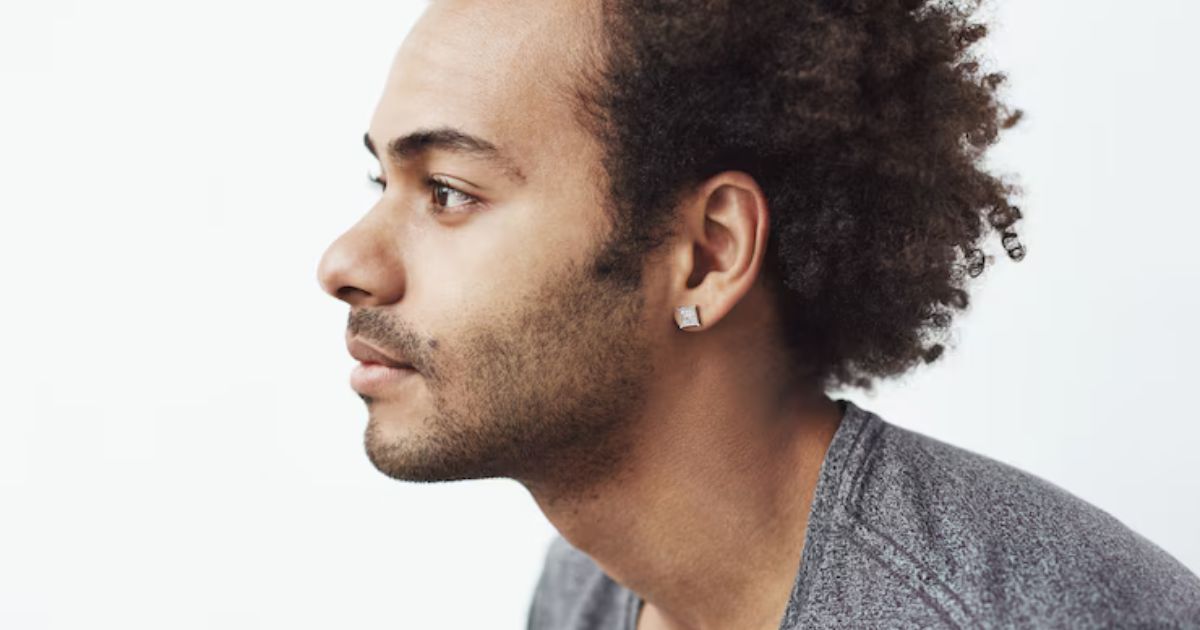Snug piercing, also known as the anti-helix piercing, is a stylish and edgy cartilage piercing that runs horizontally through the inner ridge of your ear. Unlike traditional lobe or helix piercings, this one demands a bit more attention due to its tricky location and unique healing journey. If you’re considering adding this bold piercing to your ear collection, it’s important to know what to expect—from pain levels to healing tips.
What Is a Snug Piercing?
A snug piercing passes through the cartilage fold above the anti-tragus and just before the outer rim of the ear. It appears horizontal when you look at it from the side. This makes it one of the most unique and visually appealing cartilage piercings out there. However, it also tends to be more challenging to pierce due to the thickness of the cartilage.
Why Choose a Snug Piercing?
People opt for a snug piercing because of its uncommon placement and aesthetic. It stands out from typical cartilage piercings and can be a striking centerpiece in an ear-styling combo. If you love asymmetry or want something that feels a little rebellious, the snug delivers that punch of personality.
The Pain Level of Snug Piercing
Let’s be honest—this piercing hurts more than others. Cartilage piercings tend to be more painful than soft tissue piercings, and the snug goes through a thick portion of cartilage. Most people rate it as a 7 or 8 out of 10 in terms of pain. It’s quick but intense. The good news? The sharp pain fades within seconds.
The Piercing Process
When getting a snug piercing, a professional piercer will first sterilize the area, mark the entry and exit points, and then use a hollow needle to pierce through the cartilage. Jewelry, usually a small curved barbell, is inserted immediately afterward. The whole process takes only a few minutes but must be done with precision due to the ear’s shape.
Best Jewelry for Snug Piercings
The most common jewelry for a snug piercing is a curved barbell. This shape complements the natural curve of the ear and puts less pressure on the tissue. Avoid hoops or rings at first, as they may twist and irritate the healing area. Always opt for hypoallergenic metals like titanium or surgical steel to prevent reactions.
Snug Piercing Healing Timeline
Healing takes time—typically 6 to 12 months. While some may see initial healing in a few weeks, the inner cartilage continues to settle for months. Cartilage has limited blood flow, which slows healing. Be patient and consistent with your aftercare routine for the best outcome.
Snug Piercing Aftercare Instructions
Aftercare is crucial. Clean the piercing twice daily using a saline solution or a piercing aftercare spray. Don’t twist or rotate the jewelry. Avoid touching it with dirty hands. Be careful with hair, headphones, or anything that might snag on the piercing. Sleep on the opposite side to avoid pressure and irritation.
Common Snug Piercing Problems
Swelling, redness, and tenderness are normal during the first few days. But if you notice extreme pain, pus, or a bump forming, you could be dealing with an infection or piercing bump. Don’t remove the jewelry—see a piercer or doctor. Avoid using alcohol or hydrogen peroxide as these can damage the tissue.
Dealing With Snug Piercing Bumps
Piercing bumps are common with snug piercings due to their position. They can appear because of irritation, improper cleaning, or sleeping on the piercing. Chamomile tea compresses, saline soaks, and keeping pressure off the area can help them shrink. If the bump persists, consult your piercer.
Signs of Infection to Watch For
If your snug piercing becomes overly swollen, hot to the touch, or starts to leak yellow or green fluid, it may be infected. Fever or chills can indicate a more serious issue. See a healthcare professional immediately if symptoms persist or worsen.
Snug Piercing Risks and Complications
Every piercing comes with risks. With the snug, complications include infection, migration, jewelry rejection, and scarring. Choosing a reputable piercer and sticking to aftercare guidelines dramatically lowers these risks. Avoid cheap jewelry or DIY methods at all costs.
When You Can Change Your Jewelry
Wait at least 6 months before changing your snug jewelry, even if it feels healed. Changing it too early can irritate the tissue and cause setbacks in the healing process. Always go to a piercer for the first jewelry change—they’ll ensure it’s done safely and cleanly.
Snug Piercing Vs. Other Cartilage Piercings
Compared to helix, rook, or daith piercings, the snug is more painful and takes longer to heal. It also tends to be more prone to bumps. But its distinctive look makes it worth the challenge for many. It’s not the best first cartilage piercing, but it’s perfect for those who already have some experience.
Ideal Candidates for Snug Piercing
Not everyone’s anatomy suits a snug piercing. The inner cartilage ridge needs to be pronounced enough to support the jewelry. A good piercer will examine your ear and let you know if you’re a suitable candidate. Don’t be discouraged—if your anatomy doesn’t work for a snug, there are many other cool cartilage options.
How Much Does a Snug Piercing Cost?
Prices vary depending on the studio and your location, but expect to pay between $40 and $90. This may or may not include jewelry, so check in advance. Don’t bargain-hunt too much when it comes to piercings—your health and safety are worth the investment.
Tips for Sleeping With a New Snug Piercing
Try using a travel pillow or donut-shaped pillow to avoid pressure on your new piercing while sleeping. These support your head without touching your ear. Also, consider changing your pillowcase frequently to prevent bacteria buildup.
How to Style Your Snug Piercing
Once fully healed, you can have fun switching up your look. Colored barbells, gemstone ends, and even custom pieces can make your snug stand out. Mix and match with your other piercings to create a curated ear look that’s uniquely yours.
Final Thoughts
Snug piercings are bold, beautiful, and a bit of a commitment—but if you’re up for it, the results can be stunning. As long as you go to a professional, follow the aftercare steps, and stay patient through the healing process, you’ll enjoy a unique and eye-catching addition to your ear game. It’s not for the faint of heart, but it’s definitely for those who want to stand out.
FAQs
How long before I can sleep on my snug piercing?
You should avoid sleeping on it for at least 3 months. Use a donut pillow to minimize pressure.
Can I get a snug piercing with a hoop?
It’s not recommended for initial piercing. Start with a curved barbell to reduce irritation.
What should I do if my snug piercing gets infected?
Clean it gently with saline, avoid removing the jewelry, and consult a doctor if symptoms worsen.
Will my snug piercing close if I remove the jewelry?
Yes, especially if it’s not fully healed. Cartilage piercings can close up quickly when jewelry is removed.
can I wear earbuds with a snug piercing?
It’s best to avoid in-ear headphones during healing. Opt for over-the-ear styles to reduce pressure.











